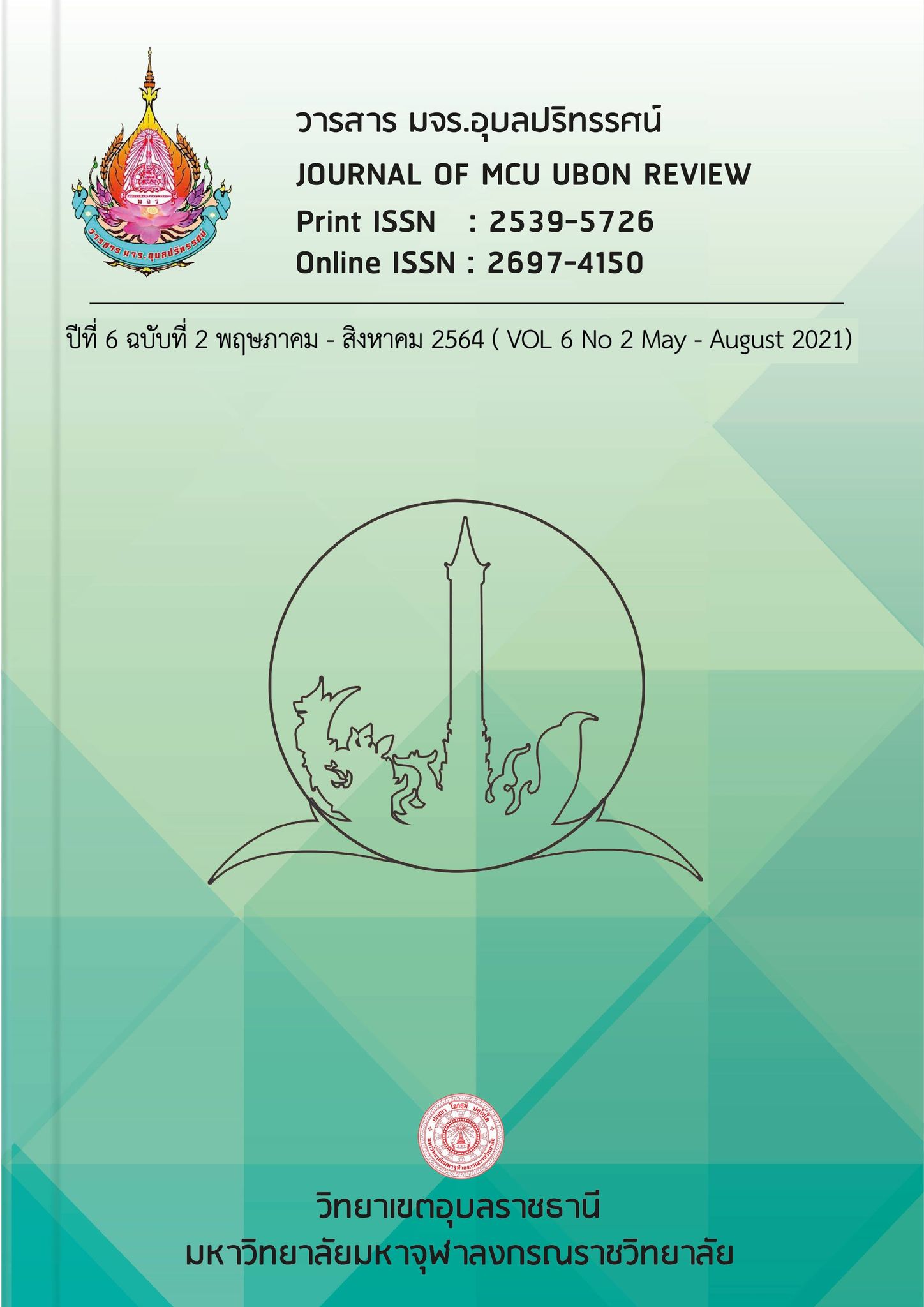THE APPLICATION OF ROYAL SCIENCE IN DAILY LIFE OF PEOPLE IN BAN HAET DISTRICT, KHON KAEN PROVINCE
Main Article Content
Abstract
This research has the objectives to study: 1) the application of the king’s science in the people’s life, Ban Hat district, Khon Kaen province, and 2) the suggestions to promote the application of the king’s science in the people’s life, Ban Hat district, Khon Kaen province. The researcher collected the data from 394 respondents by questionnaires and analyzed the data by percentage, mean and standard deviation statistics. The results were as follows:
- Most of the respondents, 51.72 percent, were male and 48.73 percent were female. The respondents, 39.09 percent, were age between 41-60 years old, 36.04 percent were age between 21-40 years old, 15.74 percent were under 21 years old, and 9.14 percent were above 61 years old. The respondents, 29.19 percent, were graduated primary school, 26.56 percent were graduated higher secondary school/ vocational certificate, 22.59 percent were graduated secondary school, 10.91 percent were graduated bachelor degree, 10.15 percent were graduated diploma, and 0.51 percent were graduated higher than bachelor degree. Most of the respondents, 32.23 percent, were freelance, 27.92 percent were labours, 19.04 percent were students, 17.01 percent were farmers, 3.81 percent were civil service. The respondents, 37.56 percent, earned lower than 5,001 bath/month, 29.19 percent earned 5,001- 10,000 bath/month, 28.86 percent earned 10,001 - 15,000 bath/month, 3.81 percent earned 15,001 - 20,000 bath/month, and 0.76 percent earned more than 20,001 bath/ month.
- The overall of the people’s application of the king’s science in their life was at high mean level (X = 3.94). While considering in each aspect, it was found that all five aspect were at high mean level: modesty (X = 3.95), rationality (X = 3.95), self-immunity (X = 3.76), knowledge condition (X = 3.92), and virtue condition (X = 4.12).
3 There were five suggestions from this study: 1) modesty: the people should be meticulous to spend their resource in their daily life, 2) rationality: the people should to listen the reason of other people and grow vegetable to consume in their families, 3) self-immunity: the people should prepare themselves for the contemporary social changes, 4) knowledge condition: the people should participate in the sufficient economy and apply that knowledge to solve the problems, and 5) virtue condition: the people should ingrain and teach the juvenile to have good awareness especially generosity and honesty.
Article Details
References
สิริรัตน์ สังสุทธิ. (2558). การบริหารตามหลักปรัชญาของเศรษฐกิจพอเพียงที่ส่งผลต่อความพร้อมสู่
ประชาคมอาเซียนของสถานศึกษาสังกัดสำพักงานเขตพื้นที่การศึกษาประถมศึกษาปทุมธานี. รายงานการวิจัย. มหาวิทยาลัยเทคโนโลยีราชมงคลธัญบุรี.
ดาราวรรณ พรหมกัลป์. (2551). การศึกษาผลการคำเนินงานหมู่บ้านเศรษฐกิจพอเพียง กรณีศึกษา หมู่บ้านเศรษฐกิจพอเพียงตัวอย่างอำเภอปัว จังหวัดน่าน. วิทยานิพนธ์รัฐประศาสนศาสตร
มหาบัณฑิต. บัณฑิตวิทยาลัย : มหาวิทยาลัยราชภัฏอุตรดิตถ์.
ศรีวิชัย สุระชาติ. (2561). การนำหลักปรัชญาเศรษฐกิจพอเพียงมาประยุกต์ใช้ในการดำเนินชีวิต อย่างยั่งยืนของชุมชนบ้านงิ้ว. วิทยานิพนธ์. หลักสูตรหลักสูตรบริหารธุรกิจมหาบัณฑิต : มหาวิทยาลัยศรีสะเกษ.
ภูสิทธ์ ขันติกุล. (2555). การประยุกต์ใช้ปรัชญาเศรษฐกิจพอเพียงในระดับบุคคลและครัวเรือนขอ ประชาชนในเขตดุสิต กรุงเทพมหานคร. รายงานการวิจัย. มหาวิทยาลัยราชภัฏสวนสุนันทา.
สำนักงานคณะกรรมการพัฒนาการเศรษฐกิจและสังคมแห่งชาติ. (2554). “รายงานสถานการความ ยากจนและความเหลื่อมล้ำในประเทศไทย ปี 2553”. (20 กรกฎาคม 2562).
สำนักงานคณะกรรมการพัฒนาการเศรษฐกิจและสังคมแห่งชาติ. (2562). “ภาวะเศรษฐกิจไทยไตรมาสหนึ่งปี
2562 และแนวโน้มปี 2562”. (20 กรกฎาคม 2562).
บัณฑิต นิจถาวร .(2562) . “ปัญหาเศรษฐกิจของประเทศ”. 19 ตุลาคม 2558. (20 กรกฎาคม 2562).
สำนักบริหารการทะเบียน กรมการปกครอง. (2562). “รายงานสถิติจำนวนประชากรและบ้าน ประจำปี
พ.ศ. 2561”. (2561). 16 ตุลาคม 2562.
Taro Yamane. (1967). Statistic: An Introductory Analysis. New York : Harper & row.

